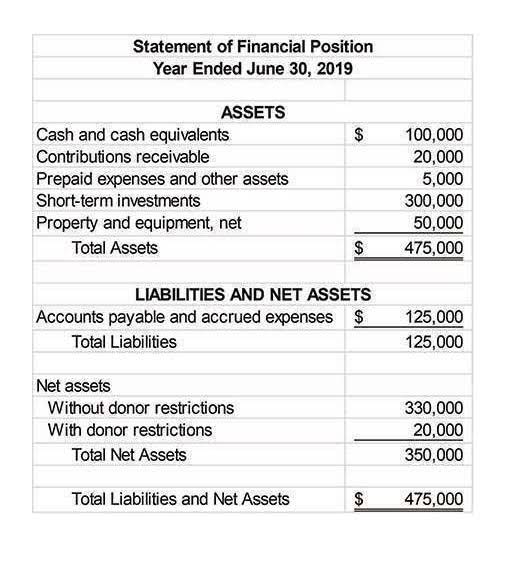
At the same time, unearned revenue can provide valuable opportunities for cash flow and growth when managed effectively as part of a company’s overall business strategy. Unearned revenue, also known as deferred revenue or prepaid revenue, is money received by a company for a service or product that has yet to be provided or delivered. This type of revenue is recorded as a liability because the company owes the delivery of goods or services to its customers. Unearned revenue, is unearned rent a current liability also known as deferred revenue, is a crucial element in a company’s financial statements. It represents the money received by a company for goods or services that have not yet been delivered.
- Accounts receivable (AR) refers to the money owed to a company for goods or services that have already been delivered or performed but not yet paid for.
- Suppose a SaaS company has collected upfront cash payment as part of a multi-year B2B customer contract.
- This involves decreasing the unearned rent revenue account and increasing the rent revenue account by the amount that pertains to the period in question.
- The unearned rent is considered deferred revenue because it represents a payment that has been received, but not yet earned by the landlord.
- Unearned revenue on a company’s balance sheet influences various financial ratios, shaping how stakeholders interpret financial health.
- Conducting regular reconciliation of deferred revenue accounts is vital to ensure that the recorded liability accurately reflects outstanding obligations.
- Prepaid rent refers to rent payments made in advance for the future use of a property.
Income Method

For instance, if rent of $2,000 is paid on January 1st for the use of a property during January, that $2,000 is recognized as rent expense for January. Therefore, it is not an asset because it lacks future benefit, nor is it a liability as the obligation is settled upon payment. In this industry, unearned rent appears as advance payments for bookings made for future dates. Given the short-term nature of these engagements, the period between recognizing a payment as unearned rent and converting it to revenue is much shorter. The handling of unearned rent in commercial property leasing mirrors that in the residential space, but the stakes and figures are often much larger. Commercial leases can span several years, with businesses sometimes paying several months or even years of rent in advance to secure strategic locations.
How to Find the Current Ratio in Accounting
- The dividends declared by a company’s board of directors that have yet to be paid out to shareholders get recorded as current liabilities.
- Accounting for prepaid rent follows specific steps under the accrual basis of accounting.
- Clements founded a multi-strategy hedge fund and has served as its research director and portfolio manager since its inception.
- This involves applying the current tax rate to the revenue expected to be recognized, and considering the period when you’ll pay taxes on this revenue.
- QuickBooks offers a wide range of financial reporting capabilities, along with expense tracking and invoice features.
This asset is recorded on the balance sheet, which provides a snapshot of an entity’s financial position at a specific point in time. At the end every accounting period, unearned revenues must be checked and adjusted if necessary. The adjusting entry for unearned revenue depends upon the journal entry made when it was initially recorded. The company can make the unearned rent journal entry by debiting the cash account and crediting the unearned rent revenue account.
How Unearned Revenue and Accounts Receivable Appear in Financial Reporting

When the company receives advance payment, it debits cash and credits unearned revenue. Proper reporting and recording of unearned revenue ensures accuracy in financial statements and compliance with accounting standards. This section outlines how it is classified, where it appears on financial reports, and how it is treated in journal entries. GAAP and IFRS 16 internationally, changed how companies account for most leases, requiring them to recognize a “right-of-use” (ROU) asset and a corresponding “lease liability” on the balance sheet. The lease liability represents the present value of the future lease payments that the lessee is obligated to make.

Examples of Unearned Rent in Different Industries
Accounts receivable essentially functions as a short-term loan provided by the company to its customers. The company has a legal claim to these funds, and they represent a valuable component of its working capital. Once the customer remits payment, the accounts receivable balance decreases, and the company’s cash balance increases, converting the asset into liquid funds. Financial statements offer a snapshot of a company’s financial health, providing valuable insights for both businesses and individuals. Navigating these statements requires familiarity with various accounting terms, some of which might seem similar but carry distinct meanings. In this journal entry, total liabilities on the balance sheet decrease by Travel Agency Accounting $5,000 while total revenues on the income statement increase by $5,000.

If a lease is terminated early, any rent paid for the period after the tenant vacates is unearned. For instance, if a tenant pays for the full month of July but moves out on July 15th under a mutual agreement, the rent for the remainder of the month must be returned to the tenant. For landlords and property https://goharn.com/admin/2025/05/26/topic-no-751-social-security-and-medicare/ management companies, these payments are not immediately recognized as income. Instead, they’re recorded as a liability on the balance sheet under “unearned rent,” reflecting the obligation to provide occupancy over the agreed period.
